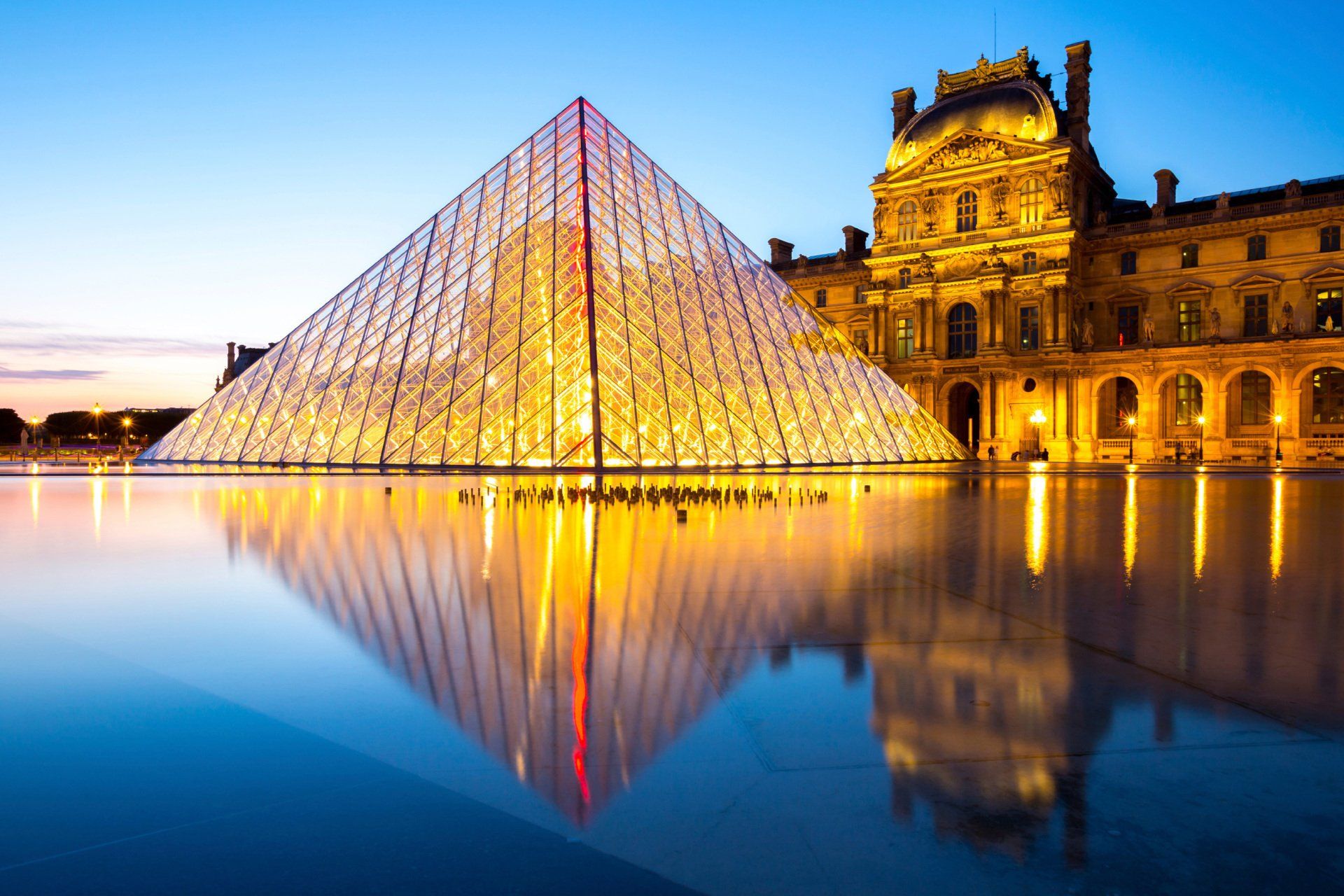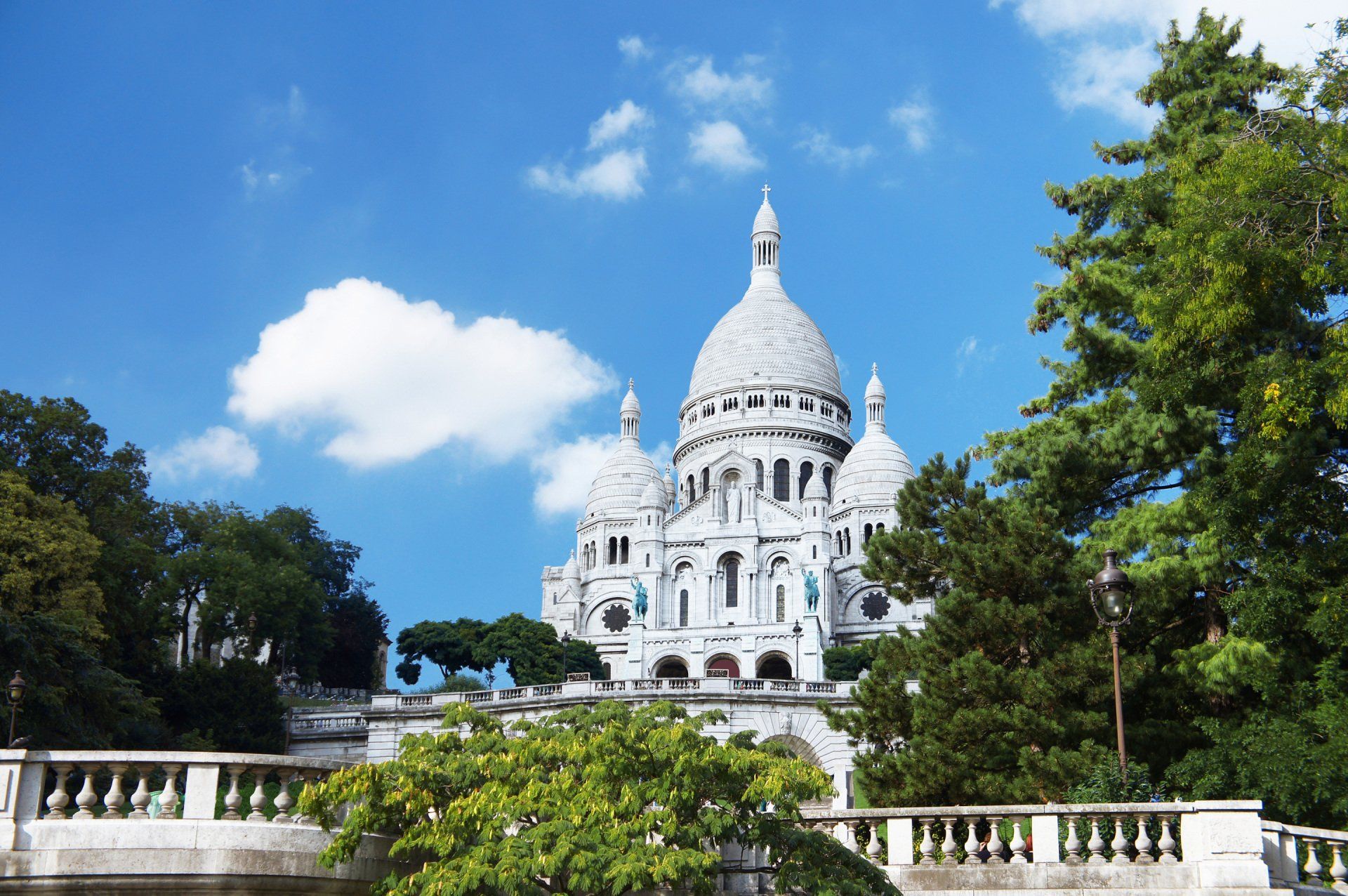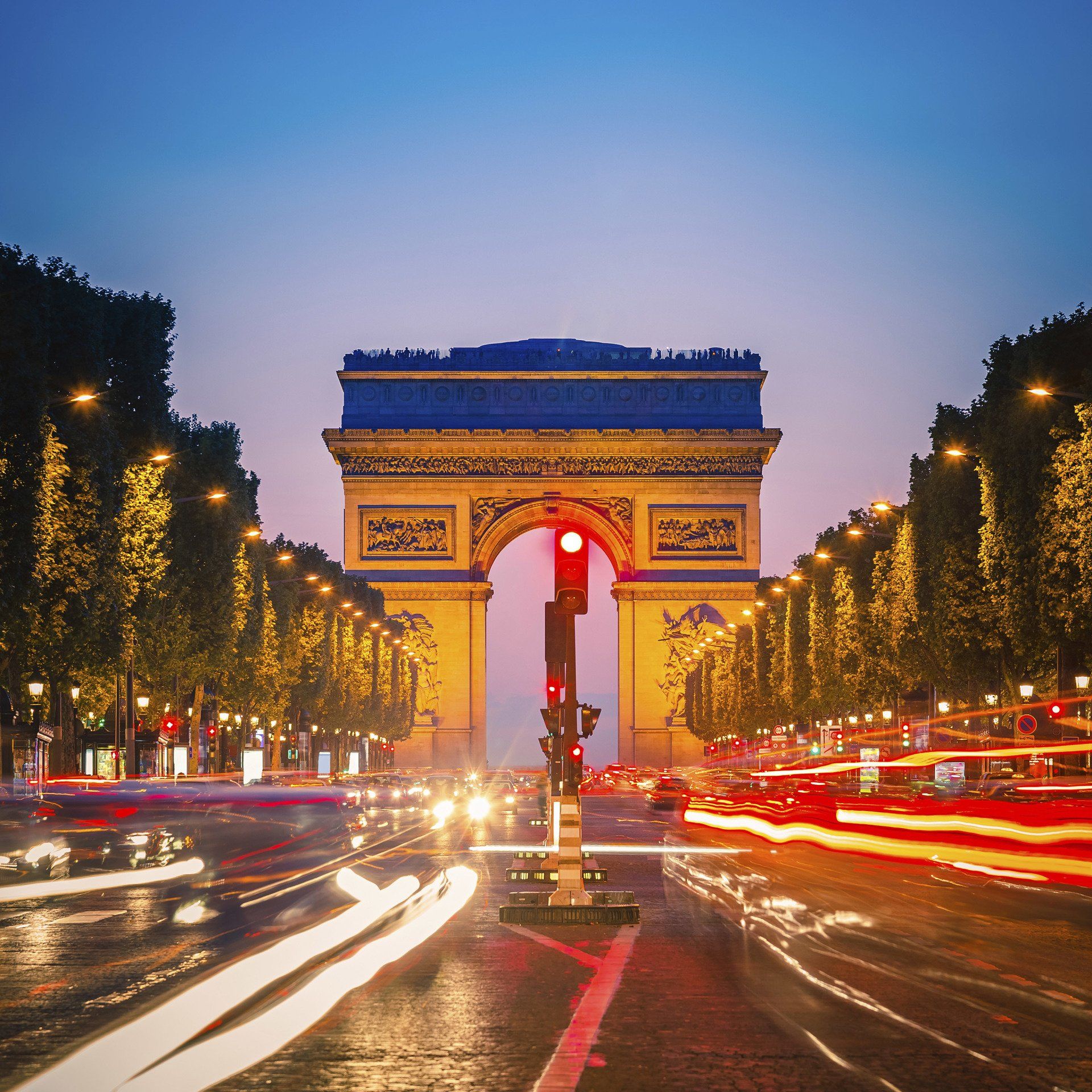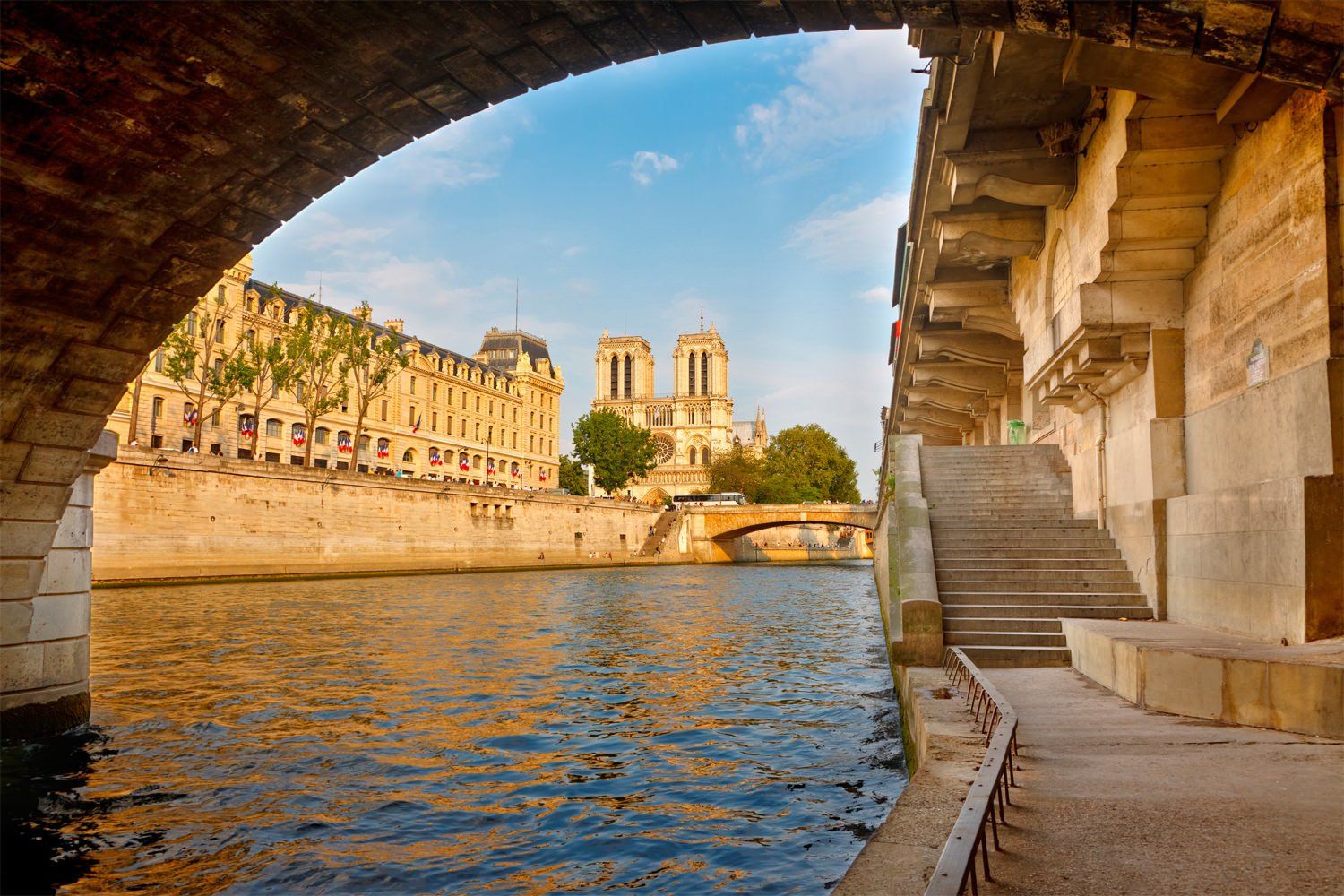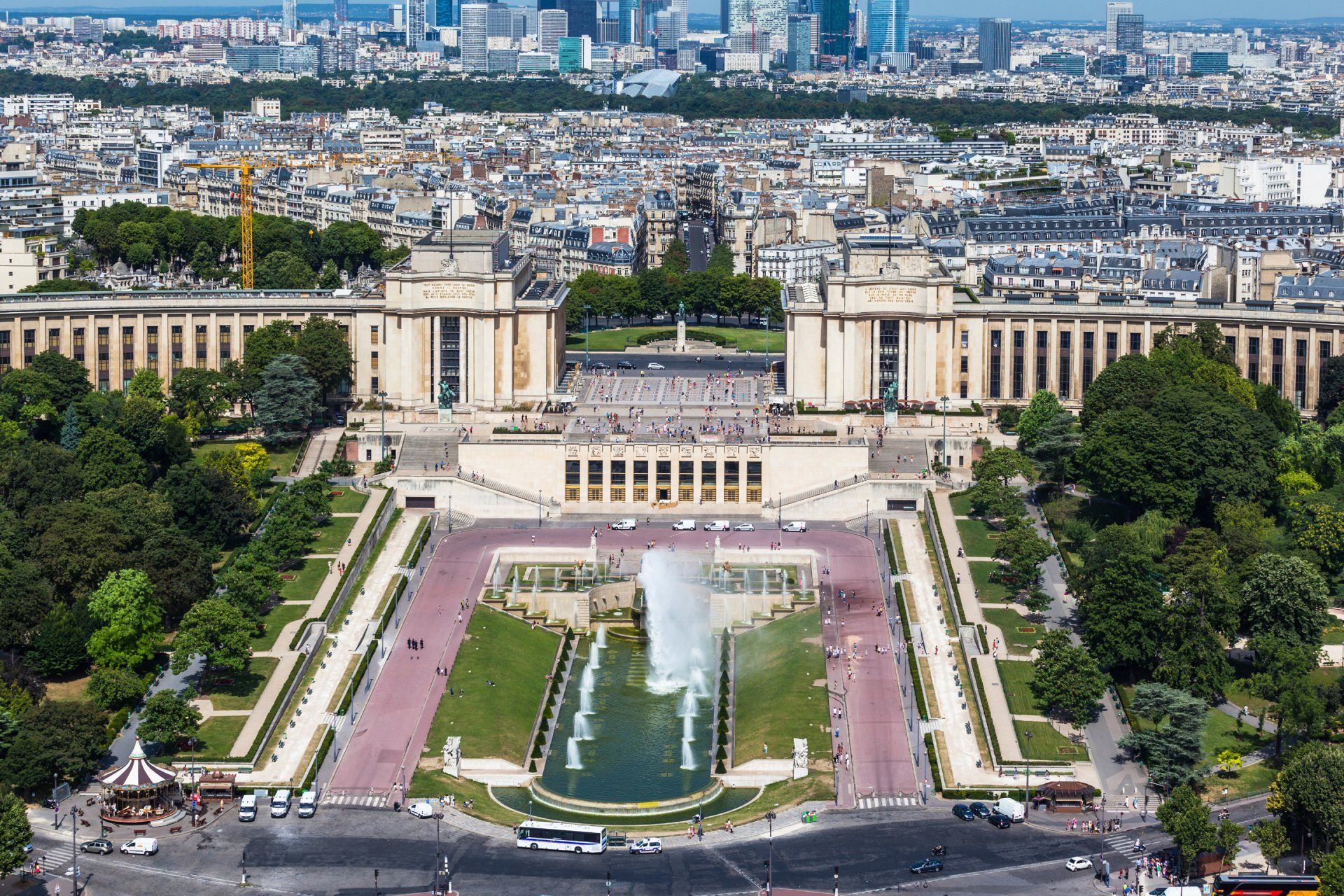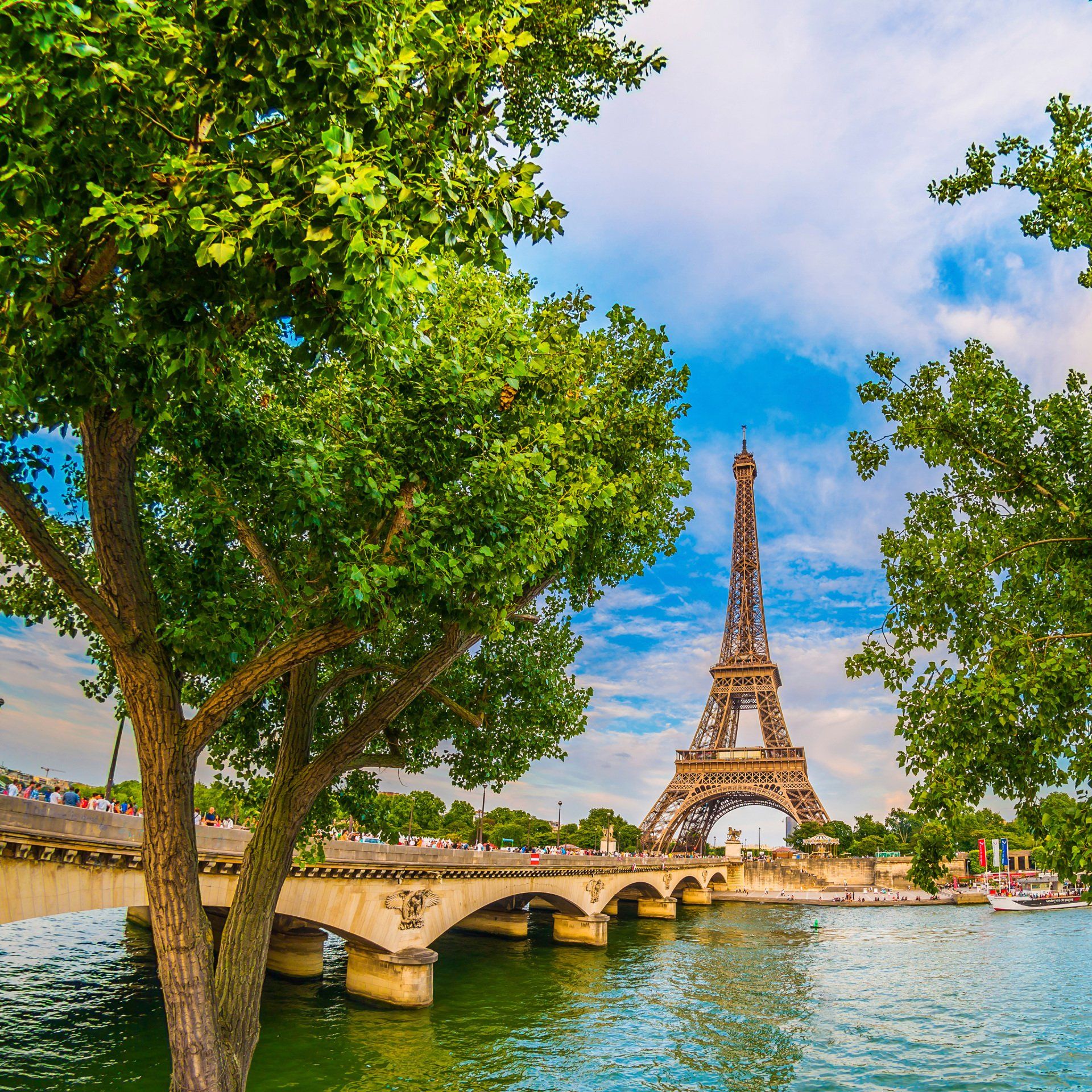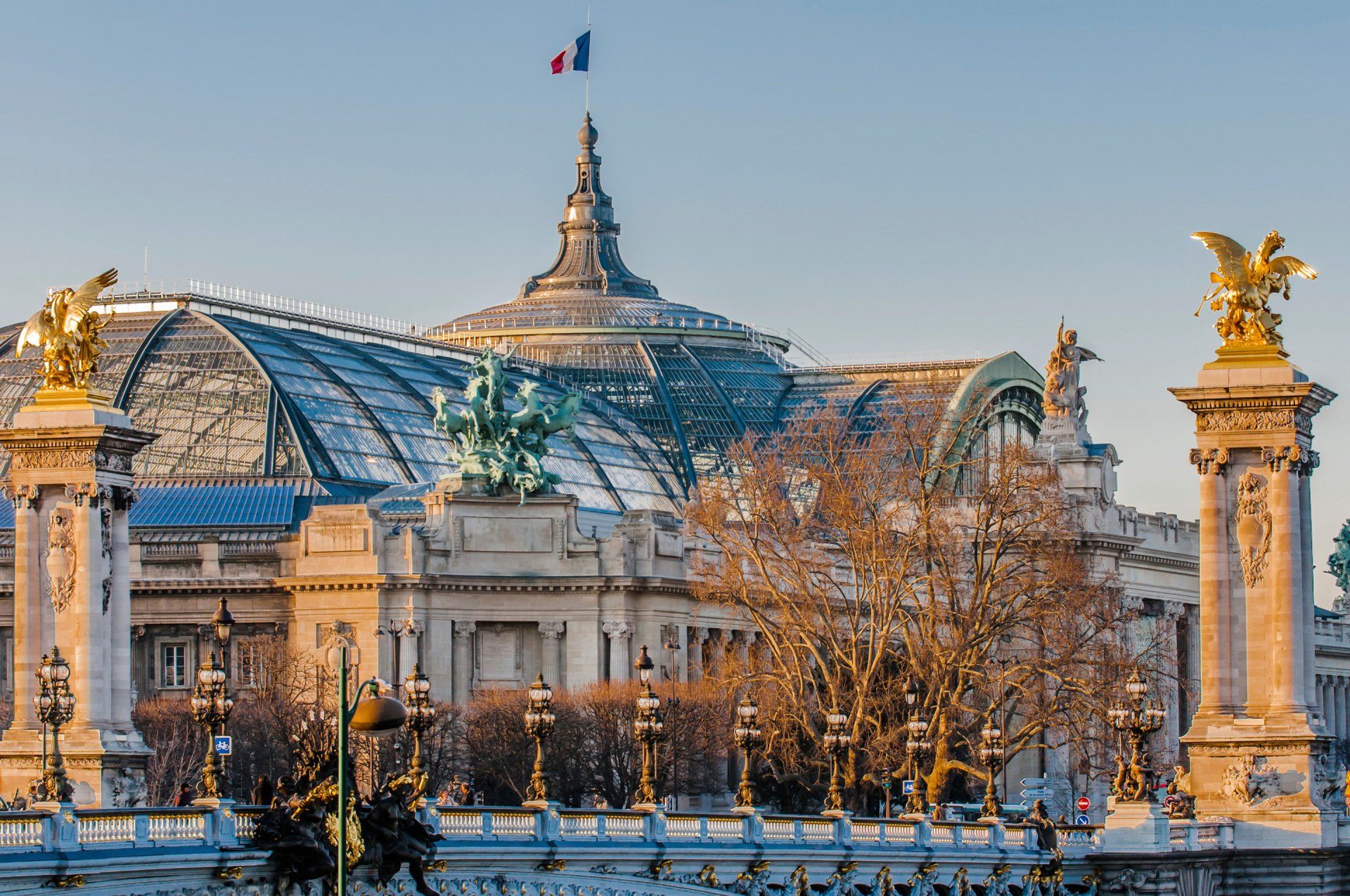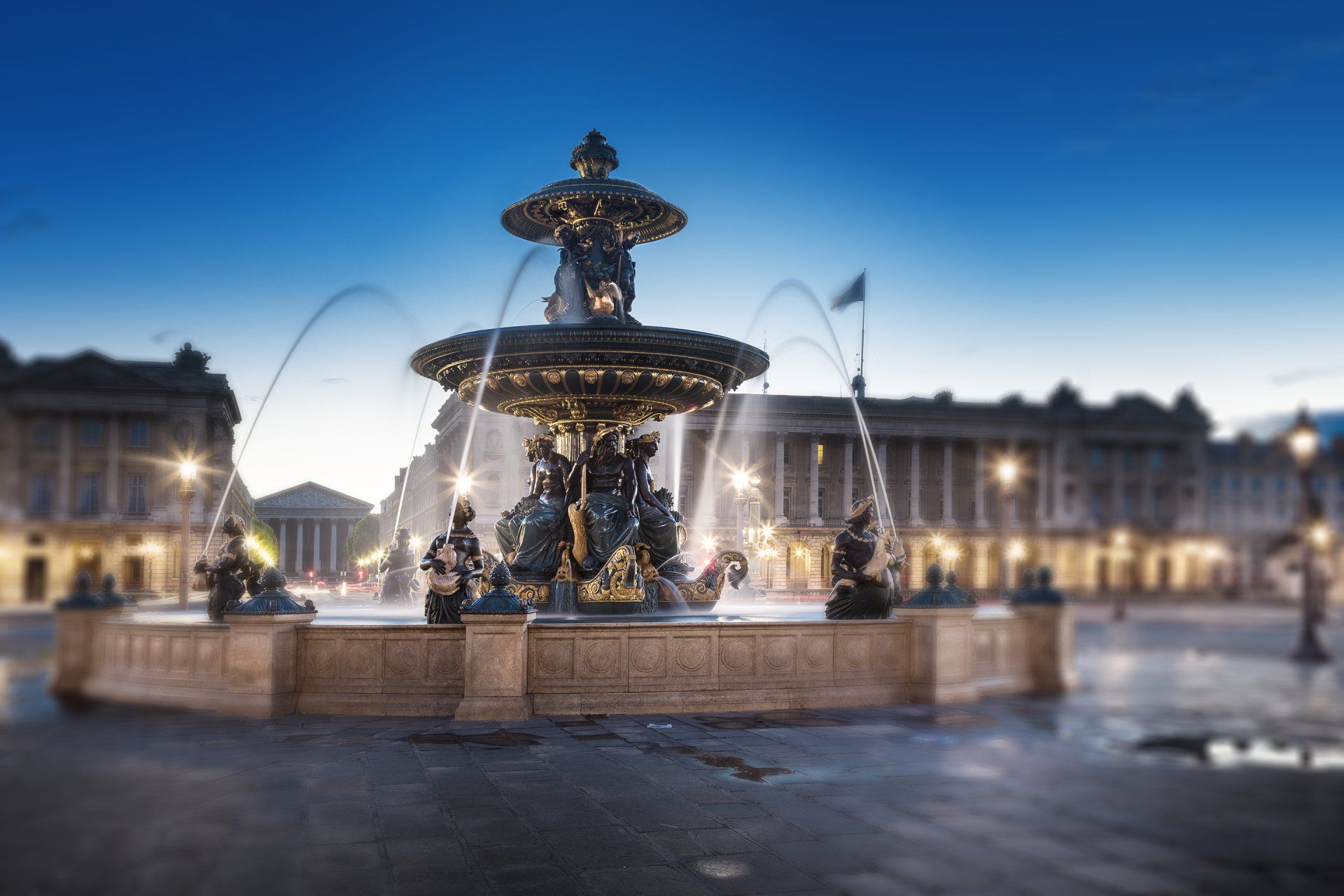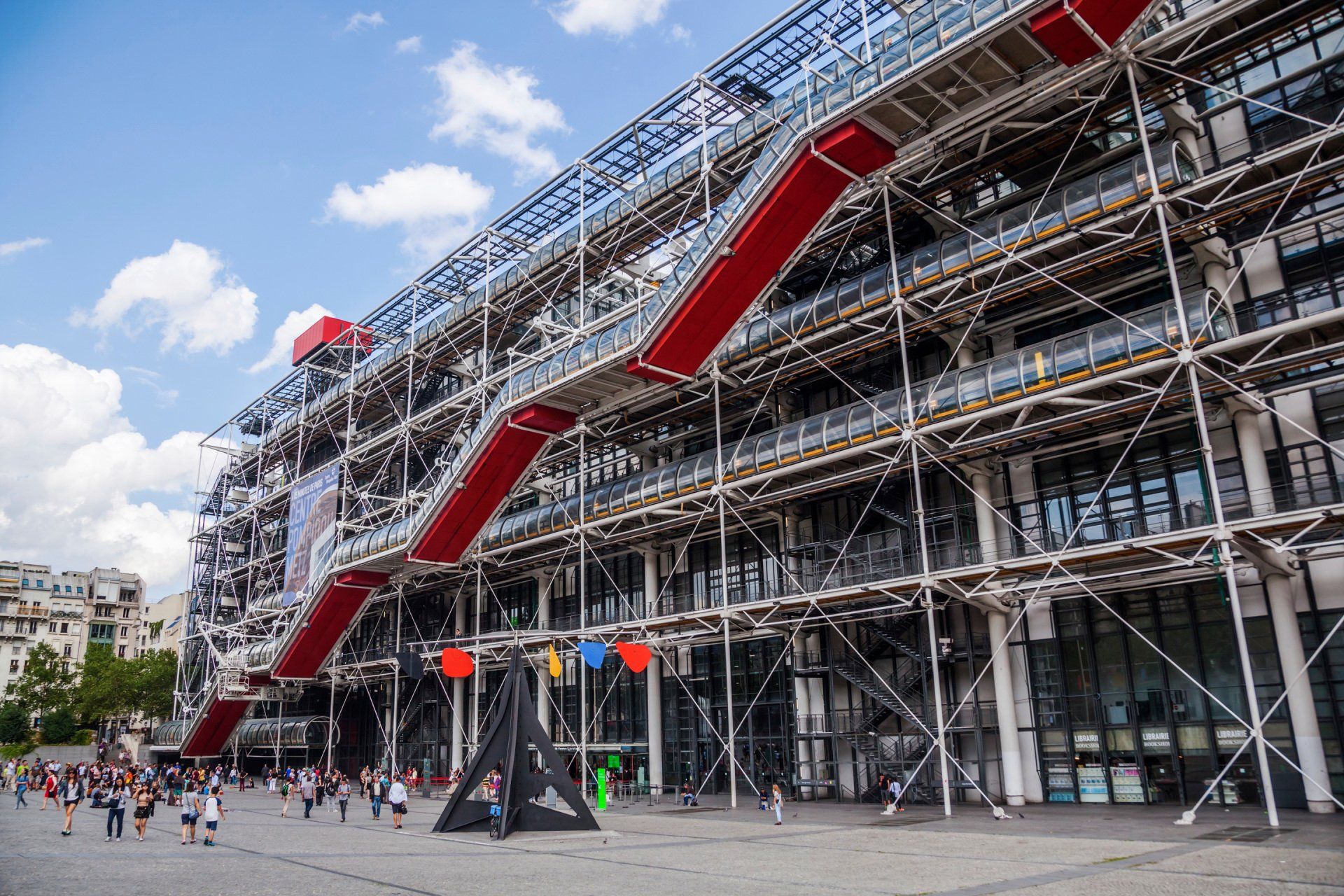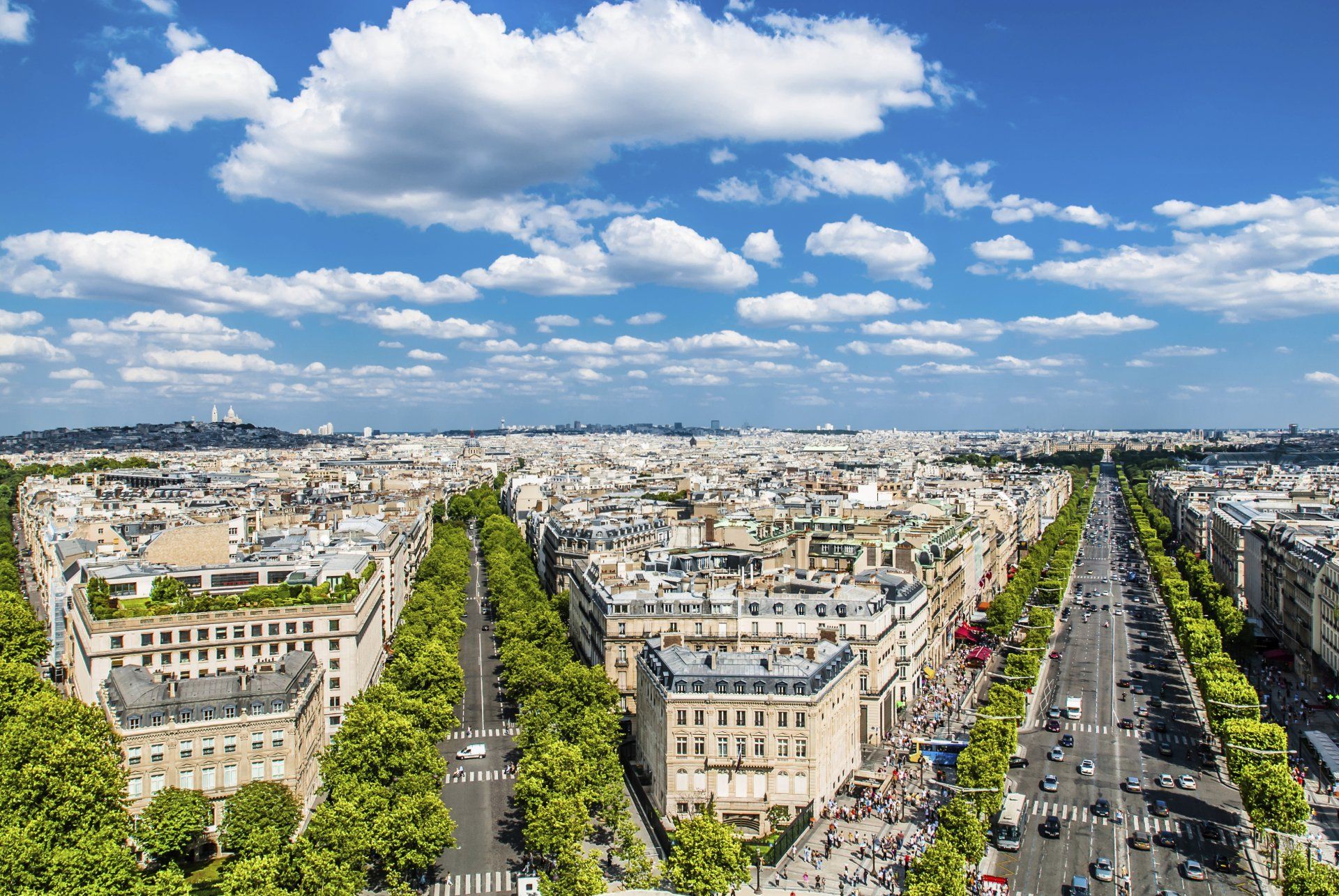Located in the 8th arrondissement, in the heart of Paris' golden triangle, Hotel de La Trémoille is one of the leading five-star boutique hotels in the city. Boasting an extensive range of luxury rooms and suites, the hotel also offers a state-of-the-art spa, gourmet restaurant, and a selection of immaculate meeting and event facilities.
Immerse Yourself in the City of Light
Paris has many affectionate nicknames, the most famous of which is La Ville-Lumière (the City of Light), partly because it was one of the first cities to adopt gas street lighting, but also because it became a centre for arts and learning during the Age of Enlightenment of the 17th and 18th centuries. The legacy of this period of history has left the city soaked in culture, with spectacular architecture from many different eras and more museums than you could ever hope to visit. The cultural significance of Paris goes well beyond traditional art and literature, with fashion and food also finding their spiritual home in this magnificent city.
Regardless of whether you’re visiting Paris for a day, or staying for months, you have no choice but to marvel at the architecture on display, primarily because no matter which way you turn, or which street you decide to take a walk along, there will always be a building or monument that will have you reaching for your guidebook. The list of must-see sights would be endless, but the über-famous Eiffel Tower, Arc De Triomphe and Notre-Dame Cathedral should certainly not be dismissed as cliché. A trip to the 276m high observatory deck of the Eiffel Tower will give you unparalleled views across the city on a clear day.
Inevitably, with the plethora of things to do and see, you’ll need to get to grips with travelling around the city. The subway system, with the city centre being very well served by the Métro, is the quickest way to make our way from place to place. Of course, you can always take to the streets on foot. The renovation of Paris, started by Georges-Eugène Haussmann, resulted in plenty of pedestrian-friendly, tree-lined streets.
When you’ve found your feet, there are countless museums and galleries to explore. The Louvre, with its iconic glass pyramid, is undoubtedly the first on many a visitor’s checklist. It’s the most visited art gallery on the planet, which is no surprise when you consider it is the home to some of the world’s most important pieces of art, including the Mona Lisa and sculptures dating back to Egyptian times. At entirely the other end of the art gallery spectrum is Les Frigos, an exhibition space for many alternative artists in the city, with an ever-changing array of exhibits and pieces.
The artistic nature of the city has leaked into other industries, particularly fine dining and fashion. ‘Haute’, meaning high-end, can apply to both food and fashion in Paris. The city is home to 10 three-starred Michelin restaurants, with a further 67 achieving at least one star. Haute cuisine is characterised by its meticulous craftsmanship and perfect presentation. The trend in the 1960s for Nouvelle Cuisine (new cuisine) has added a touch of flare and experimentation to the already sublime offerings. Much like the Parisian cuisine, Haute Couture embodies the most luxurious, yet also most experimental, in the world of fashion. Paris Fashion Week marks the end of the annual fashion calendar, and it closes with style, with top fashion designers showcasing their newest collections on the catwalk, with the world’s media watching closely.
In a city with a never-ending list of sights to see, it’s surprisingly easy to do nothing at all. There is an abundance of green spaces, including the most spectacular of these: Tulieries Garden. It’s the perfect place to sit back and watch the world go by, as is the Canal St-Martin, which is a popular spot for both tourists and locals to sit outside one of the waterside bistros, perhaps with a glass of fine wine at hand.
Paris lives up to its reputation of being an enlightened city, as even someone with just a passing interest in history will find themselves eagerly soaking up the Parisian culture. If you want to experience La Ville-Lumière for yourself, each of our three luxury hotels will allow you to do just that. The Hotel Balzac, the Hôtel de Vigny and La Trémoille are ideally located and fully equipped for your next trip to the French Capital.
Regardless of whether you’re visiting Paris for a day, or staying for months, you have no choice but to marvel at the architecture on display, primarily because no matter which way you turn, or which street you decide to take a walk along, there will always be a building or monument that will have you reaching for your guidebook. The list of must-see sights would be endless, but the über-famous Eiffel Tower, Arc De Triomphe and Notre-Dame Cathedral should certainly not be dismissed as cliché. A trip to the 276m high observatory deck of the Eiffel Tower will give you unparalleled views across the city on a clear day.
Inevitably, with the plethora of things to do and see, you’ll need to get to grips with travelling around the city. The subway system, with the city centre being very well served by the Métro, is the quickest way to make our way from place to place. Of course, you can always take to the streets on foot. The renovation of Paris, started by Georges-Eugène Haussmann, resulted in plenty of pedestrian-friendly, tree-lined streets.
When you’ve found your feet, there are countless museums and galleries to explore. The Louvre, with its iconic glass pyramid, is undoubtedly the first on many a visitor’s checklist. It’s the most visited art gallery on the planet, which is no surprise when you consider it is the home to some of the world’s most important pieces of art, including the Mona Lisa and sculptures dating back to Egyptian times. At entirely the other end of the art gallery spectrum is Les Frigos, an exhibition space for many alternative artists in the city, with an ever-changing array of exhibits and pieces.
The artistic nature of the city has leaked into other industries, particularly fine dining and fashion. ‘Haute’, meaning high-end, can apply to both food and fashion in Paris. The city is home to 10 three-starred Michelin restaurants, with a further 67 achieving at least one star. Haute cuisine is characterised by its meticulous craftsmanship and perfect presentation. The trend in the 1960s for Nouvelle Cuisine (new cuisine) has added a touch of flare and experimentation to the already sublime offerings. Much like the Parisian cuisine, Haute Couture embodies the most luxurious, yet also most experimental, in the world of fashion. Paris Fashion Week marks the end of the annual fashion calendar, and it closes with style, with top fashion designers showcasing their newest collections on the catwalk, with the world’s media watching closely.
In a city with a never-ending list of sights to see, it’s surprisingly easy to do nothing at all. There is an abundance of green spaces, including the most spectacular of these: Tulieries Garden. It’s the perfect place to sit back and watch the world go by, as is the Canal St-Martin, which is a popular spot for both tourists and locals to sit outside one of the waterside bistros, perhaps with a glass of fine wine at hand.
Paris lives up to its reputation of being an enlightened city, as even someone with just a passing interest in history will find themselves eagerly soaking up the Parisian culture. If you want to experience La Ville-Lumière for yourself, each of our three luxury hotels will allow you to do just that. The Hotel Balzac, the Hôtel de Vigny and La Trémoille are ideally located and fully equipped for your next trip to the French Capital.

